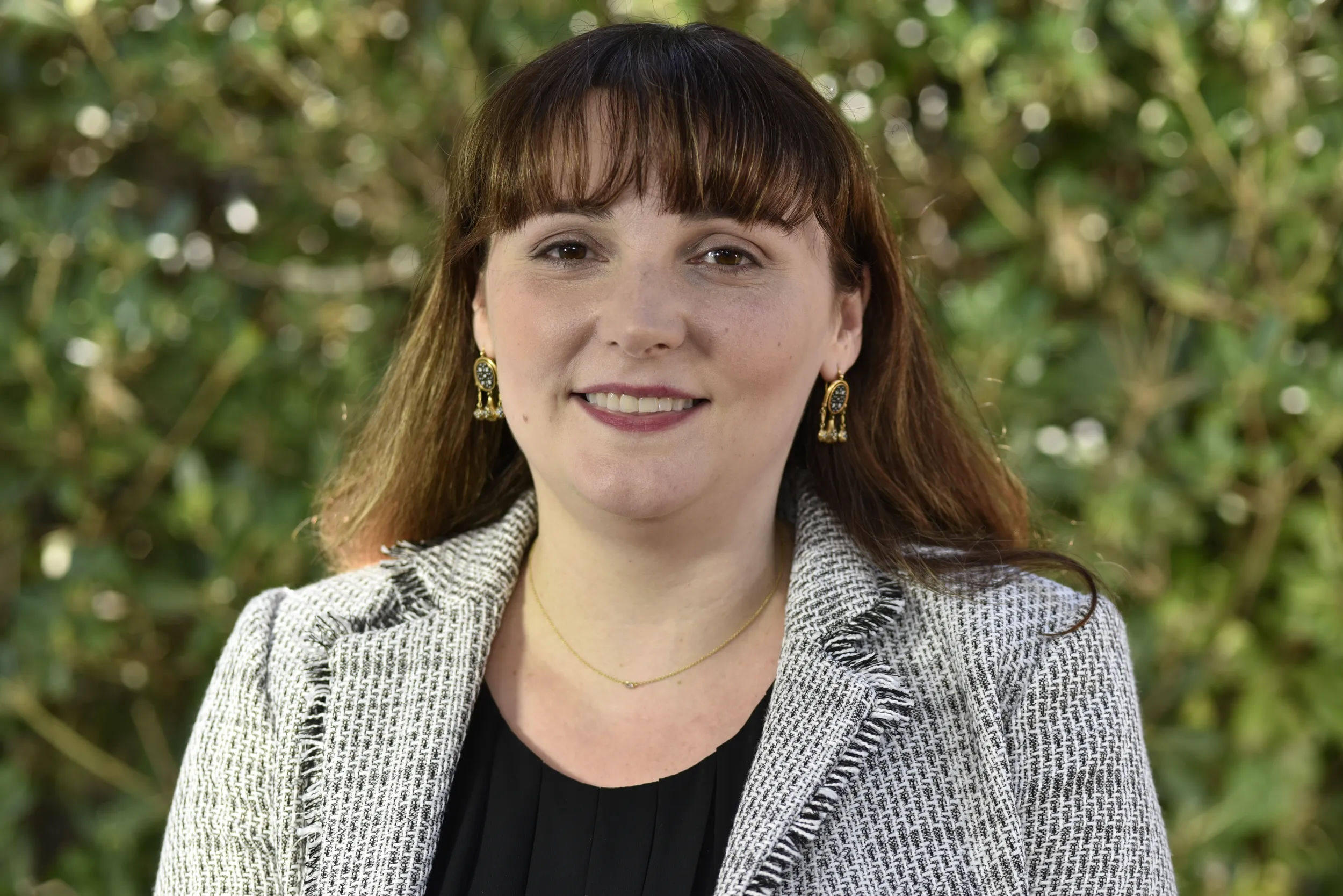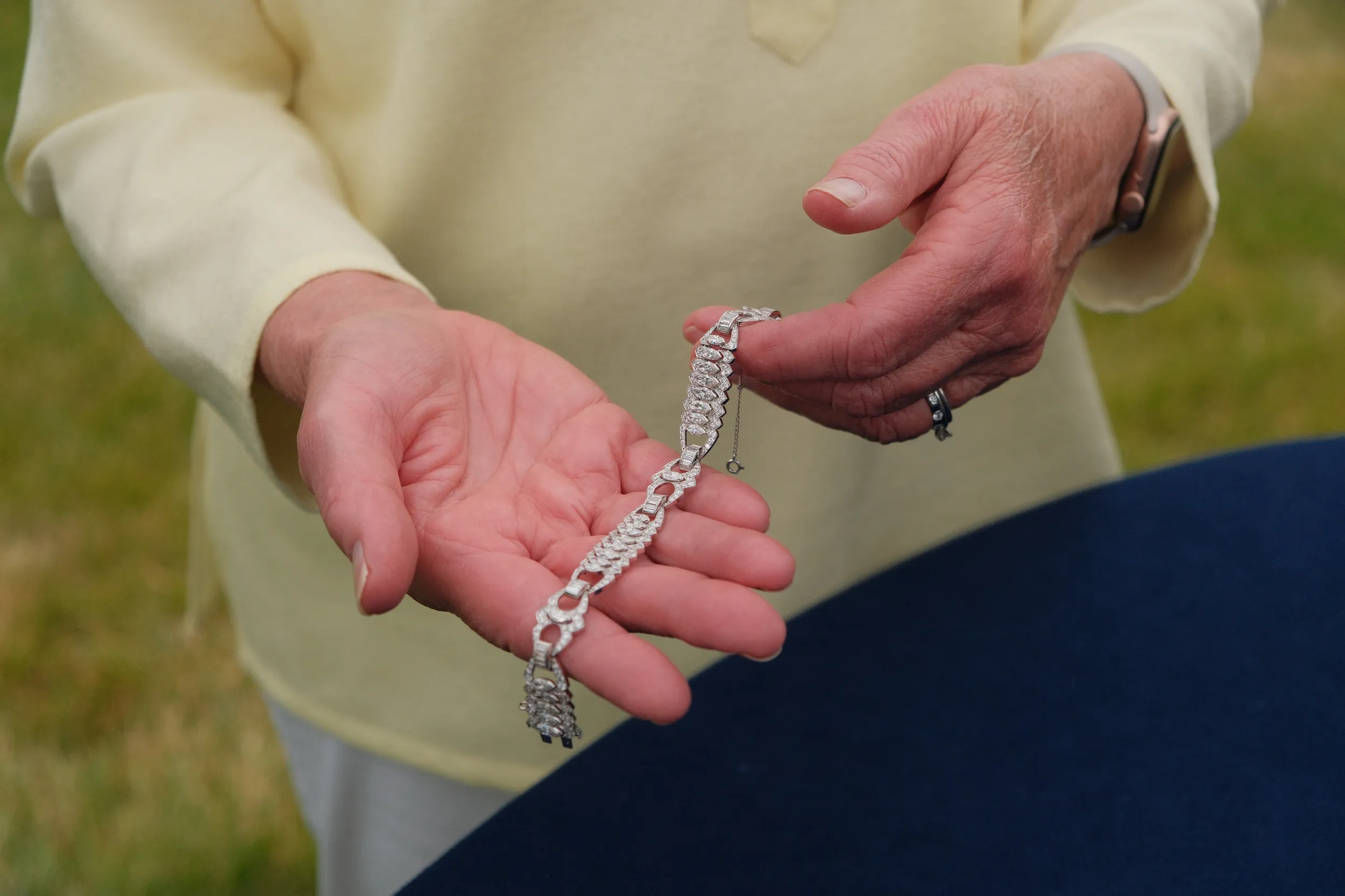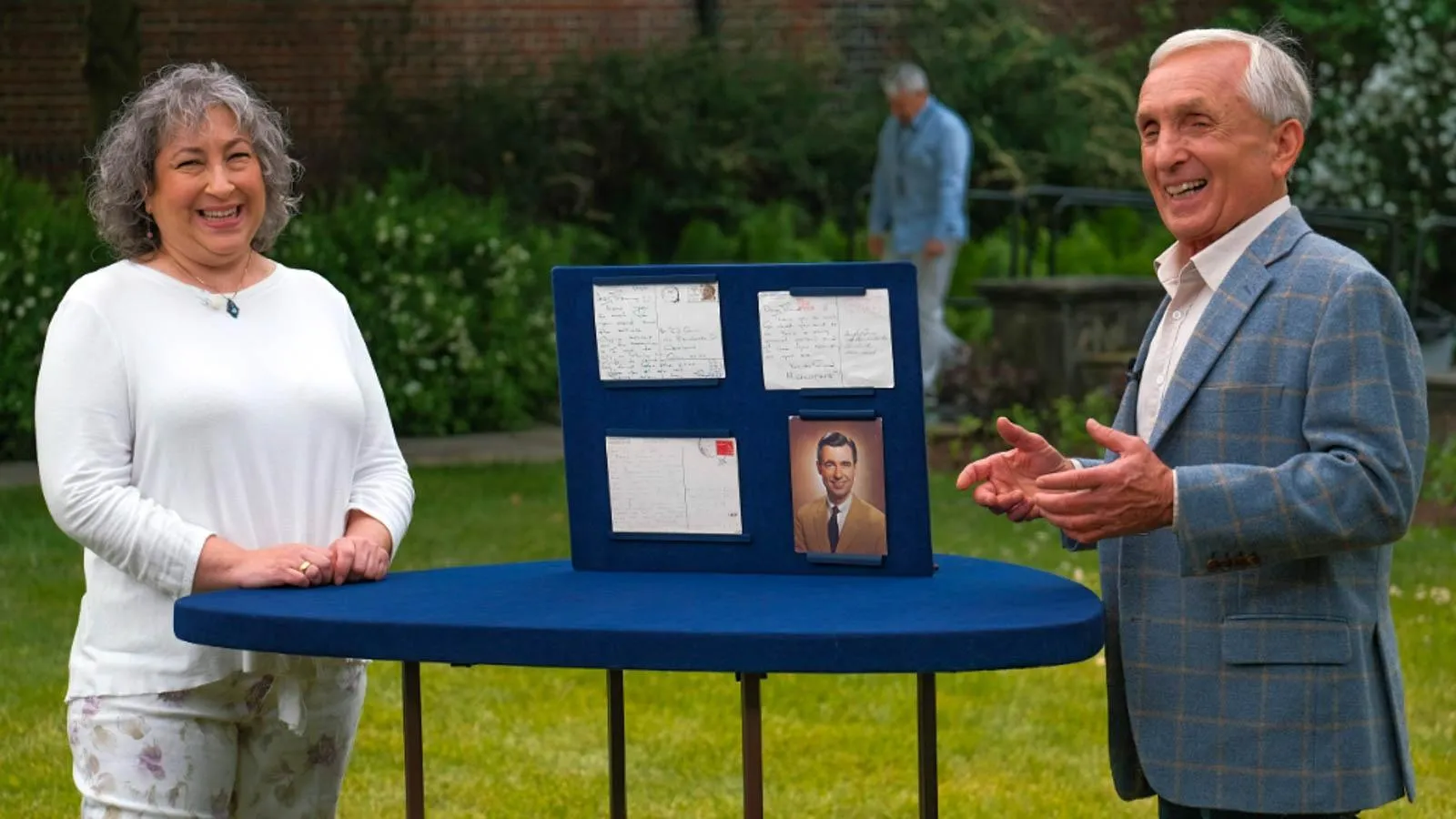GUEST: Well, it was my mother's bracelet. She took me to the jewelry store in the early '60s. She's a widowed lady...
APPRAISER: Mm-hmm.
GUEST: ...and she bought it for herself.
APPRAISER: And was this a special occasion, or did she just buy it because?
GUEST: No, she decided that's what she wanted.
APPRAISER: And have you ever worn it?
GUEST: Yes, I have.
APPRAISER: Mm-hmm.
GUEST: My sisters have worn it. We've all worn it at our children's weddings.
APPRAISER: Mm-hmm. Oh, wonderful– and has there ever been talk about splitting it up?
GUEST: Well, when my mother passed, I did take it to a jeweler.
APPRAISER: Mm-hmm.
GUEST: He suggested that it could be taken into four pieces...
APPRAISER: Mm-hmm.
GUEST: ...but it would ruin its value, essentially, so...
APPRAISER: Right, mm-hmm. Well, we have a saying where I work is, "The greatest enemy of vintage jewelry is multiple daughters." (both laugh) Because this often happens, that people have one wonderful piece of jewelry and four daughters, and they want to divide it up, and usually that's how vintage pieces are ruined. But it's, so it's really good that you didn't do that, because it's far more valuable as one bracelet than as whatever you would make from its parts.
GUEST: Right, well, the four of us really got along.
APPRAISER Uh-huh. Mm-hmm.
GUEST: And anytime anybody wanted to wear it, they'd wear it.
APPRAISER: That's great, that's great.
GUEST: Yeah.
APPRAISER: You have such a good relationship.
GUEST: It's not something you'd wear down the street, you know, to go shopping, so… (laughs)
APPRAISER: Well, it depends where, where you shop.
GUEST: Right, that's true, that's true. (laughs)
APPRAISER: And do, do you remember what year you, your mother bought it in?
GUEST: It had to be the mid-'60s.
APPRAISER: Mm-hmm.
GUEST: Because I can't imagine her taking me there when I was in high school, so… (both laugh) I had to have been in college.
APPRAISER: Mm-hmm.
GUEST: Home for the summer when she did it.
APPRAISER: Okay. Obvious, it's really kind of a quintessential piece of 1960s design. They loved to use these different angular-cut stones. You can see they've used three different shapes of diamonds here. They've used marquis-cut diamonds, which are the ones that look like, a little bit like a canoe.
GUEST: Hm.
APPRAISER: Baguette diamonds, which are the rectangular ones, and then round brilliant cuts to fill it in. So it's really a beautiful bracelet. The diamonds are really white, well-matched. And the bracelet is set in platinum, which is very common for pieces from this period.
GUEST: Mm-hmm.
APPRAISER: It's not signed, but it's likely, with the style and the construction, that it was made in the United States, most likely New York. I did a quick carat weight, and it's coming up at about 15 carats of diamonds total, which is a really. significant carat weight. And do you remember what your mother bought the bracelet for when she took you to go shopping?
GUEST: Yes, she bought it for $10,000.
APPRAISER: $10,000. Well, you know, if you were to insure this now, I would probably suggest a value of at least $50,000.
GUEST: Oh, okay, yeah, that's why we keep it in the safe. (both laugh) Well, thank you.
APPRAISER: Well, thank you for bringing it.
GUEST: You've made my day!
APPRAISER: (chuckling) That's what I like to hear.
GUEST: Thank you.





